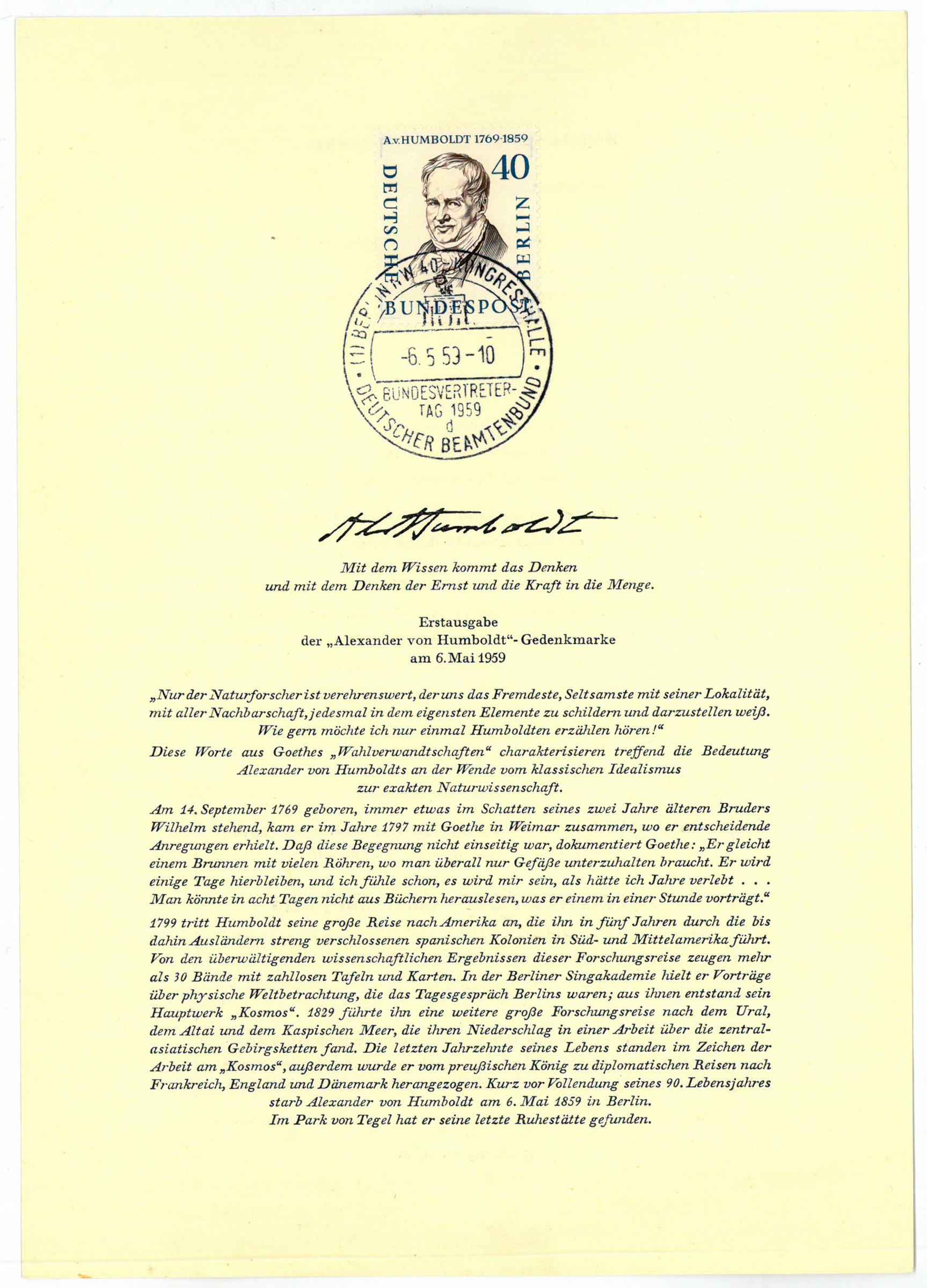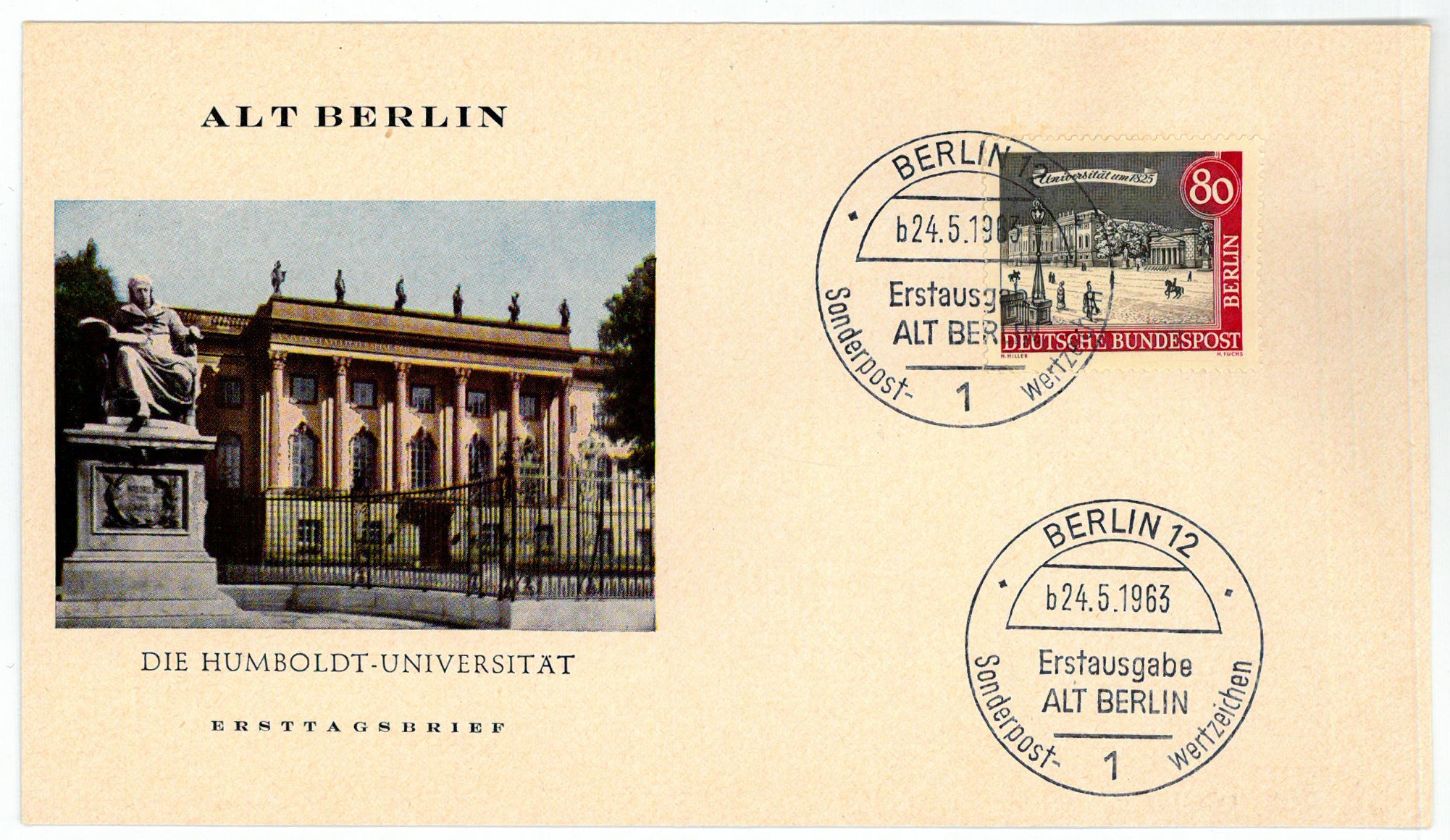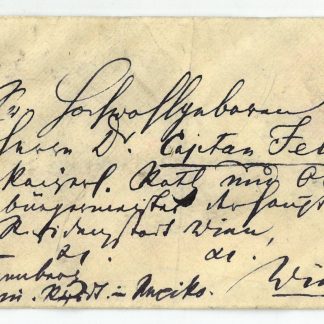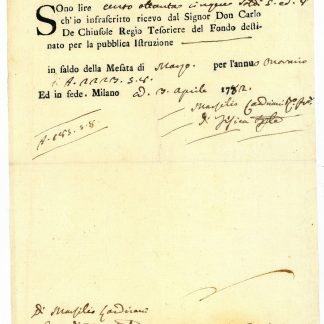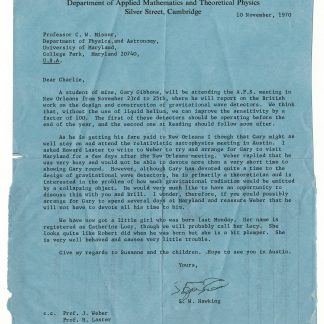From Paris to Mexico: Alexander von Humboldt and Andrés Manuel del Río
Autograph letter signed.
4to. 2 pp. on bifolium. In French.
€ 4.500,00
Highly interesting letter of introduction for the politician and industrialist Jean-Baptiste Marie Chaptal de Chanteloup (1782-1833) that was almost certainly addressed to the Spanish-Mexican mineralogist and chemist Andrés Manuel del Río (1764-1849). Considering his "position" and "noble character", Humboldt asks the recipient to support Chaptal also in the name of his distinguished friends Joseph Louis Gay-Lussac and François Arago, both chemists like Del Río. He introduces Chaptal de Chanteloup as the son of the important chemist and politician Jean-Antoine Chaptal (1756-1832), who, as the recipient knows "better than anyone else", has rendered "great services" to the "sciences and the industrial arts". The son, on the other hand, with his experience in managing "major factories, possesses all the knowlege than can make him valuable to Mexico". In closing, Humboldt underlines his personal connection to Chaptal de Chanteloup: "I have known him from his earliest youth, and take a keen interest in his success" (transl.).
Andrés Manuel del Río, the likely recipient, professor at the Royal College of Mines in Mexico City and member of several learned societies, did indeed know Jean-Antoine Chaptal, as they studied together under Antoine Lavoisier in Paris in 1791. His acquaintance with Alexander von Humboldt goes back even further, to 1789, when they were both students at the Mining Academy in Freiberg. In 1803/04, during Humboldt's stay in Mexico, the two men renewed their friendship and collaborated on important research with the institutional support of the Royal College of Mines. However, their relationship would later be clouded by events surrounding Del Río's discovery of the element vanadium. The actual discovery in 1801 was not published in Europe beyond a short note in a Spanish journal, as Del Río's paper on his discovery addressed to Jean-Antoine Chaptal was lost with the ship carrying it. Humboldt, although skeptical of the discovery (as was Del Río himself), took samples and a new paper back to Europe. When Hippolyte-Victor Collet-Descotils tested the samples, he could find no proof for a new metal, erroneously confirming instead Humboldt's and Del Río's suspicion that the substance might be chromium. Therefore, Humboldt decided not to have Del Río's paper published. In early 1831, the Swedish chemist Nils Gabriel Sefström independently discovered the element that he named vanadium, at a moment when Friedrich Wöhler was reinvestigating Del Río's samples at Humboldt's request. Soon after Sefström's annoucement, Wöhler confirmed that Del Río had discovered the same element as early as 1801. Alhough Humboldt gave equal credit for the discovery to Del Río, Selfström, and Wöhler at the session of the French Academy of Sciences on 28 February 1831 and personally informed Del Río, his friend was subsequently embittered and reproached Humboldt for his negligence decades earlier. Humboldt's announcement of the discovery to the Academy happened only two months after he wrote the letter of introduction for Chaptal de Chanteloup, who would die in Mexico in 1833.
Traces of folds. With a minor tear to the fold and minimal foxing.




